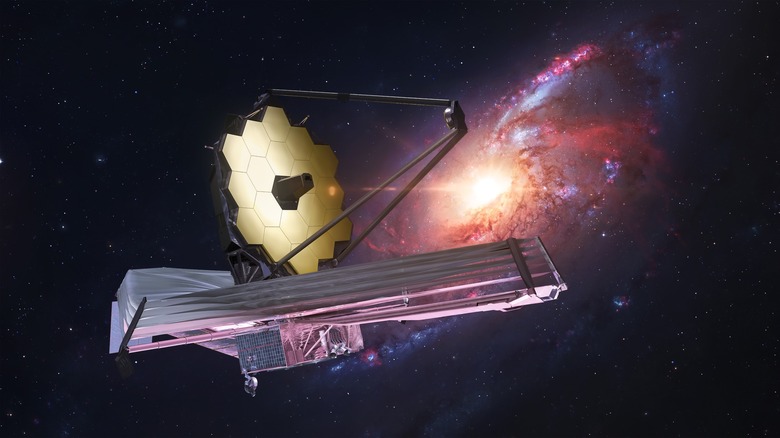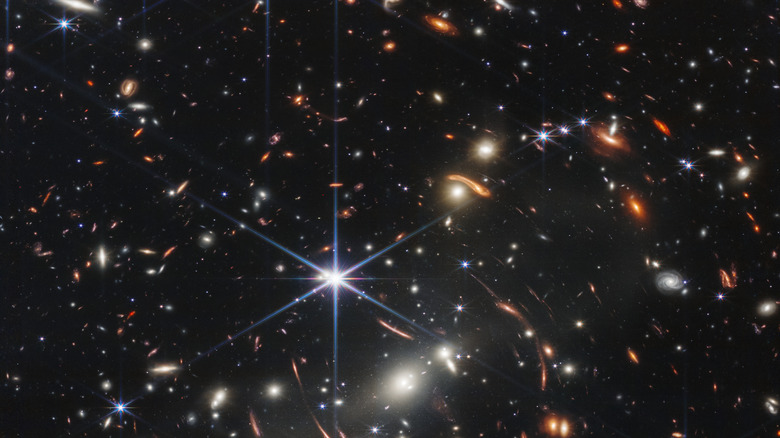NASA's First Full-Color James Webb Space Telescope Image Revealed
The long-awaited day has arrived, with the release of the first science image taken using the James Webb Space Telescope. According to NASA, the image is the deepest and sharpest ever taken of the distant universe in the infrared, and it shows the glittering galaxies of the galaxy cluster SMACS 0723. A galaxy cluster is a huge group of hundreds or thousands of galaxies, and this one was observed in a relatively dim patch of the sky. The image appears bright and full because of Webb's extremely sensitive instruments, which are able to pick up the very faint light given off by these extremely distant objects.
The image covers a tiny area of the sky — just the size that would be covered by a grain of sand held at arm's length by a person standing on Earth — but it shows the richness and depth that is present even in the seeming blackness of space. The image also shows an effect called gravitational lensing, in which the gravity of the galaxy cluster causes light coming from behind it to bend, allowing researchers to see even more distant galaxies that would be otherwise invisible. Known as Webb's First Deep Field, it gives a teaser of what this new telescope is capable of. "It's a new window into the history of our universe," said U.S. President Joe Biden in a briefing. "And today we're going to get a glimpse of the first light to shine through that window. It's astounding to me."
James Webb Space Telescope so far
Launched in December 2021 in a partnership between NASA, the European Space Agency, and the Canadian Space Agency, Webb observes the universe in the infrared from its orbit around the sun. As the telescope traveled through space, it had to unfurl its hardware, which had been folded up to fit inside its launch vehicle. Its approximately 21-foot mirror composed of 18 hexagonal segments had to be minutely aligned by adjusting each segment with nanometer precision. Then, with mirrors aligned, each of Webb's four instruments had to be cooled down to its operating temperature, and then it had to be calibrated and tested. As of July 11, 2022, the telescope is fully ready for science operations.
The great news for scientists is that Webb's performance is as good or even better than was hoped, even though the telescope received a slight ding from a micrometeoroid in June. "Scientists are thrilled that Webb is alive and as powerful as we hoped, far beyond Hubble, and that it survived all hazards to be our golden eye in the sky," said Webb scientist John Mather in an emailed statement. "What happened after the big bang? How did the expanding universe cool down and make black holes and galaxies and stars and planets and people? Astronomers see everything twice: first with pictures, and then with imagination and calculation. But there's something out there that we've never imagined, and I will be as amazed as you are when we find it." More images from James Webb will be released tomorrow, July 12.

